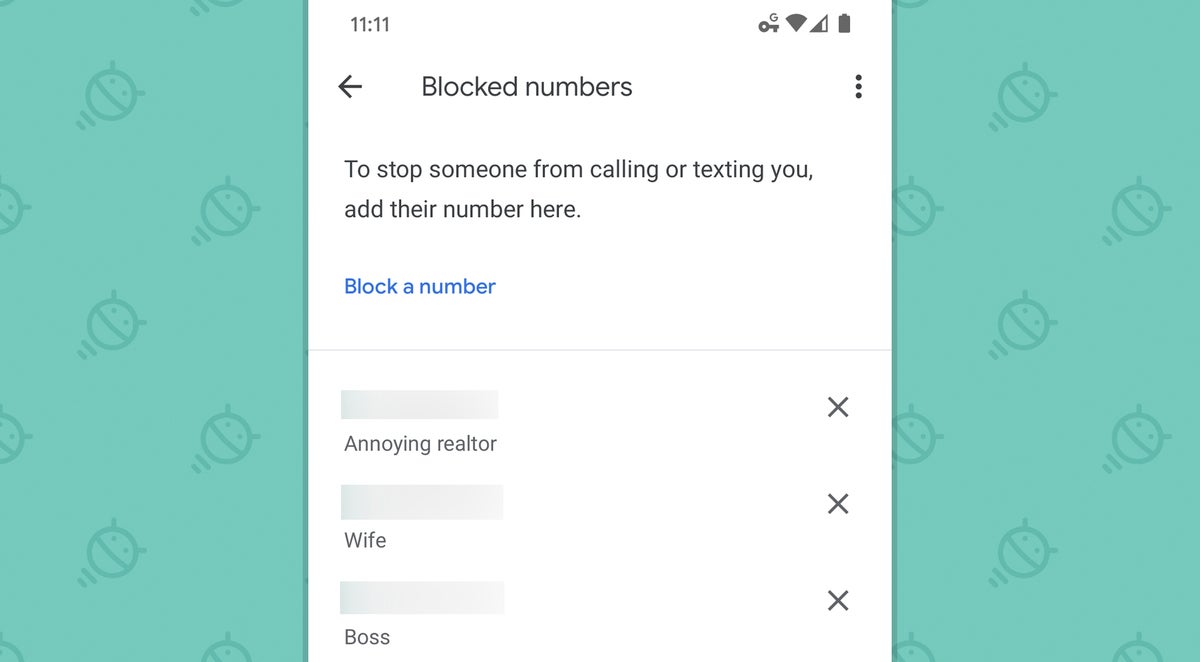Got Fi? Google’s unusual wireless service may have shifted its name from Project Fi to Google Fi a while back, but its core proposition has remained relatively constant since the start: Pay only for the data you use, and avoid all the traditional carrier shenanigans.
For the right kind of person, Fi can be a real cost-cutter and hassle-saver. And aside from its most prominently promoted perks — the seamless network-switching, the public Wi-Fi use, the fee-free roaming and hotspot capabilities, and so on — Fi has some pretty interesting out-of-the-way options that can really elevate your experience.
Whether you’re new to Fi or a Project Fi/Google Fi veteran, take a few minutes to think through these handy hidden features and see if any might be useful to you. They’re all there and just waiting to be embraced — and generally speaking, they won’t cost you an extra dime to use.
Google Fi feature No. 1: Free data-only SIMs
One of Google Fi’s most valuable and broadly untapped benefits is the service’s free data-only SIM program. And it doesn’t take much to take advantage of it: Just open up the Fi website or app, select “Manage plan,” then look for the unassuming little option labeled “Add data-only SIM.” Click or tap that, and Fi will walk you through the steps to add a data-only SIM to your account. Google will create the card, activate it, and even ship it to you for the oh-so-affordable price of $0.
What then? Why bother? Well, lemme tell ya, you curious caribou: With that data-only SIM in hand, you can effectively turn any other device — be it a laptop or tablet with a SIM card slot or even just a dusty old phone — into an extension of your main Fi service, provided it’s compatible with Fi’s networks. Just pop that sucker in wherever you want, and the device will instantly be online and ready for your use. All you’ll pay is your same standard $10 per gigabyte rate (or not even that, if you’re using one of Fi’s newer unlimited plans). And equally important, if you don’t use any data in a given month, you won’t pay anything; unlike with most other carriers, there are no silly surcharges or fees simply for the “privilege” of having an add-on device.
Personally, I use the data-only SIM feature to keep a rotating roster of random old phones active and available for different types of use. Sometimes, I carry one with me when I’m traveling (or theoretically traveling, in current-day realities). It then basically acts as a backup device in that scenario: If the day turns long and the battery on my regular phone runs low, I can use the secondary one for getting online, streaming music or videos, creating a hotspot for my laptop, or even staying in touch with family and colleagues via any number of internet-based Android messaging apps — all without having to worry about replenishing my primary phone’s power.
Back in typical times when I was still going to an actual gym, I’d also use the Fi data SIM feature to turn an old phone into a workout phone — a device I’d carry with me whilst sweating profusely in that environment. That way, I could listen to music or my favorite casters of pod and even check in on messages without having to fret about dropping the phone or banging it against the exceptionally heavy weights I so clearly lift with vigor. Unlike with your primary phone, you can just throw the device down on the ground in any ol’ place and go about your business without a worry in the world. And as an additional bonus, you can set the phone up to have minimal distractions and temptations for stealing away your focus in those purpose-driven moments.
But those are just a couple of ideas. Aside from the surrogate phone situation, you could use a data-only SIM for a variety of interesting possibilities — creating a functional phone for a kid (and/or parakeet) without having to pay for an extra line, creating a dedicated hotspot device that can beam out mobile data access anywhere without draining your main phone’s power, or even creating an always-connected backup phone that you could keep in your car in case your regular one ever gets lost, broken, or otherwise incapacitated.
Pretty darn spiffy, I say.
Google Fi feature No. 2: An always-on VPN
You’d be forgiven for failing to notice, but Google Fi has offered a noteworthy option for subscribers for a couple years now: the ability to have all of your data encrypted via Google’s virtual private network, or VPN, all the time — no matter where you are or what type of network you’re using. Your phone only has to be running 2018’s Android 9 release or higher in order to take advantage of it.
Fi always encrypts data automatically when the service connects you to a public Wi-Fi network as part of its network-switching setup, but this feature lets you extend that same protection to all of your data — mobile network or Wi-Fi, automatic connection or not — with just one simple switch.
And that, suffice it to say, is significant — especially for business users and anyone else concerned about optimal security. Network snooping is one of the most realistic concerns for mobile security these days — far more so than that big, bad Android malware monster we hear about so often — and having an always-on VPN is the best form of protection to make sure no one’s peeking over your virtual shoulder whilst you peck out important missives (or even just scroll through photos of kangaroos while pretending to do important work).
Unfortunately, finding a good VPN is easier said than done. Unless you work for a company that provides its own data encryption service, you’re left to fend for yourself — and mobile VPNs are notoriously difficult to evaluate and tough to maintain confidence in over time. They’re also yet another recurring expense to contend with.
So, yeah: Having a trustworthy VPN built right into your wireless service is a pretty powerful perk. To fire up the free Fi VPN feature, head into the Fi app on your phone and select “Privacy & security” on the app’s main screen. Then just activate the toggle next to “Protect your online activity” — and rest easy knowing your mobile transmissions will always be safe from prying eyes.
Google Fi feature No. 3: Call forwarding
It’s easy to forget that Google Fi started out as an extension of Google Voice, in many ways, with a fair number of Voice-inspired features intact. One such feature is call forwarding — and it’s a handy option that’s still around and potentially quite useful on the Fi side.
The way it works is simple: You add a number into Fi’s forwarding list, and anytime you get a call, it’ll ring on both your cell phone and that secondary number so you can answer it wherever you want. Personally, I use this in conjunction with a free Google-associated home office “phone line” I created so that any calls coming into my main number ring the landline-style phone on my desk in addition to ringing my cell phone. The old-school desk phone is more comfy and convenient to talk on, and it doesn’t run down my main phone’s battery. You could do the same thing with a more traditional office landline, a second cell phone, or even a banana with a cellular connection (which, by the by, is a very impressive thing to own).
If call forwarding might make sense in some capacity for you, look for the aptly named “Call forwarding” option under the “Phone Settings” header on the Fi app’s main screen — and get ready to give your ringing a whole new level of life.
Google Fi feature No. 4: Super-effective number blocking
Little-known fact: Google Fi has its own system for blocking annoying people from contacting you — and the way it works is meaningfully different from the similar-looking system in the typical Android Phone app.
When you block a number in the standard Phone app, any calls from the offending party won’t ring your phone — but instead, the caller will go directly to your voicemail. That means they can still leave a message (which you will receive) and thus can continue to contact you and expect a reply.
When you block a number with Google Fi, the person calling gets a generic recording telling them that the number “has been disconnected or is no longer in service.” For all effective purposes, you’ll appear to have vanished off the face of the earth to said pest. And whether it’s an overly aggressive salesperson, an ex, your Uncle Morty with the weird breath, or a wide-mouthed bass who won’t take a hint, that’s an excellent option to have available.
(Oh, and either approach will prevent texts from coming through, too.)
To take advantage of Fi’s super-shushing power, look for the “Spam & blocked numbers” option in the Fi app, under the “Phone Settings” section on the main screen. Open it and then tap “Manage blocked numbers” to add whatever digits you want into the list. You can even add a description of the number for future reference, if you’re feeling particularly loquacious. And if you end up changing your mind later, all you’ve gotta do is go back to that same spot and tap the “x” alongside the offending number to remove it from the list.
 JR
JR Ahh — all set.
Google Fi feature No. 5: Voicemails as texts
Few minor annoyances are more irksome than the antiquated obligation of having to check (gasp!) a voicemail. Heck, most people I know rarely even listen to the things anymore, if they can help it.
If you’ve got important business calls coming into your phone, though, ignoring voicemails entirely probably isn’t an advisable option. And while Android’s automated voicemail transcription system (via the Google Phone app) goes a long way in making it easier to get the gist of a message without having to, y’know, actually listen to it, Fi has an easily overlooked option that can make the process even more painless.
It’s a tucked-away setting that’ll cause any new voicemail to arrive as a regular ol’ text message in whatever messaging app you use. It’ll look just like a message from yourself, with a transcription of the voicemail and the number of the (alleged) person who left it.
 JR
JR You can still play voicemails back in your Phone app, if you want, but having ’em show up as texts makes the whole system feel more like a part of the regular, contemporary messaging experience. It makes it as convenient as can be to read incoming voice messages and then archive ’em in a single, streamlined place with all of your other messages — and, provided you’re using Google Messages or another cross-platform messaging app, it also makes it possible to access any such missives from any computer where you’re signed in.
To activate the option, tap the “Voicemail” option on the Fi app’s main screen, then look for the “Voicemails by text” toggle.
And there you have it: five fantastic Fi functions for your phone. Figuring out Fi features has never been finer. Farewell for now, friend. (Fin.)
Want even more Googley knowledge? Sign up for my weekly newsletter to get next-level tips and insight delivered directly to your inbox.




